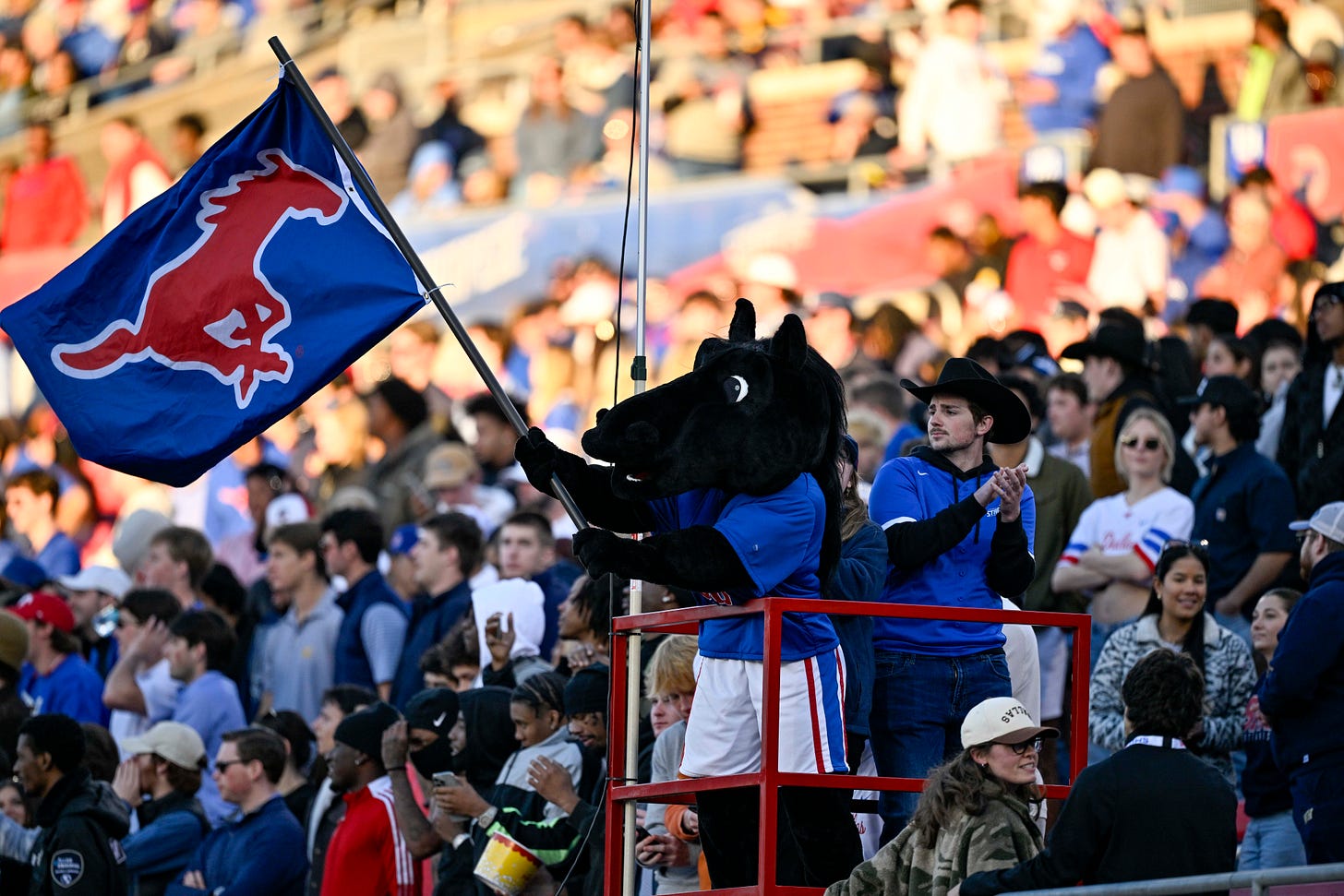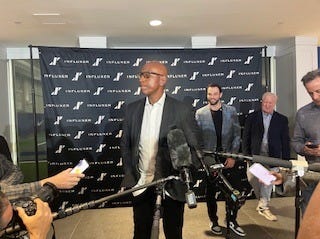Name, Image, Likeness, and New Era of College Sports
The Impact of NIL on Student-Athletes Amid SMU's Resurgence
The concept of name, image, and likeness (NIL) has been a hot-button issue throughout college sports since it was introduced in July 2021, causing stirs and chaos regarding pay-for-play, recruiting, regulation, rules, governance, and more.
Similar practices once violated NCAA policies and ruined college athletics programs. Now, student-athletes can, rightfully, make money while in school and get exposure to other professional opportunities regarding their interests outside of their respective sport.
“I’m so happy that these players are getting an opportunity that we never had and the players before us never had,” Pro Football Hall of Famer and former SMU star running back Eric Dickerson said during an NIL Panel discussion held at his alma mater. “An NFL player would take a kid to dinner, and he’d get blackballed. They’d put him on suspension, and you couldn't play him. It was like you couldn’t get help anywhere. To me, this is helping the players.”
SMU, of course, was the subject of the biggest pre-NIL “pay-for-play” scandal in college sports as it was infamously handed the “death penalty” in the 1980s after several years of success.
The Mustangs quickly crashed into the basement of college football, becoming an embarrassment to those who had been part of the program. At one point, the football alums of the 1980s weren’t even welcome on campus, even though everyone knew most programs across the country were engaging in similar activities.
“They would have shut the NCAA down if it was the University of Texas,” Dickerson said. “They would do it. They chose us because we were a smaller school to make an example. I just thought it was wrong. Everybody was doing it. It’s funny how Texas was doing it, A&M was doing it, Alabama was doing it, and you chose us?”
Dickerson has long been an advocate for better treatment of players and student-athletes at all levels. He himself acknowledges publicly that he is outspoken on the issue and “is not the favorite person” of the NCAA and the NFL.
Many will look at some NIL deals, like the recent deal between Michigan and Bryce Underwood, as examples of player greed because, inevitably, the player is seemingly choosing the highest monetary offer. Yet, Dickerson believes such values are justified by the way the NCAA has treated its student-athletes.
“It’s not greedy,” he explained. “I always felt like the NCAA has been exploiting these players for so long. Think about all the money they made. They [the players] do all the work, and they [the NCAA] make all the money and own the product. I thought it was wrong from day one.”
After decades of bad football teams and years of mediocrity, SMU won its first conference championship in 40 years last season. The program has experienced an incredible turnaround, and with NIL continuing to emerge and evolve, this may just be the beginning.
SMU has returned to the Power 4 and is playing in the ACC Championship in its first season in the conference, finishing 11-1 during the regular season and undefeated in league play. It’s been a long road back, but the Mustangs are coming full circle, and Dickerson may be their biggest advocate.
“I’m so happy for them,” Dickerson restated. “This group of guys, one day, they’ll look back and say, ‘Man, I was on the team that won the first ACC Championship. I was on that football team.’ In 20 years, they’ll still be talking about it. I think it’s fantastic for the players.”
One of those players is safety Jonathan McGill, who has become a staple of the SMU defense since transferring from Stanford. While he may have a future in the NFL, he is also one of the student-athletes at the forefront of NIL at SMU.
McGill is one of nearly 40,000 student-athletes across the country involved with Influxer, a platform that matches student-athletes with brands and opportunities to help them achieve their goals and allows student-athletes to profit off merchandise sales.
Influxer was founded by former Baylor walk-on safety Tyler Jaynes. Jaynes noticed how quickly players would blow through the stipends that came with their scholarships between paying rent, buying books, providing for their families, and other every day responsibilities and knew there had to be some fix, especially with the minuscule chances of each turning pro after their college days.
“I’m a former student-athlete, but I was not Eric Dickerson,” Jaynes remarked. “So, being a former student-athlete and thinking about people like myself that came from blue-collar towns in Texas … NIL should be equitable and should be for everybody.”
The money is what everyone on the outside seems to focus on, and for good reason. Student-athletes were denied the rights to the uses of their name, image, and likeness for far too long while others profited off them. But as McGill and several others have pointed out, NIL brings these student-athletes more than just money.
“There’s a lot of benefits to it in terms of actually being able to start your brand before you even get to the NFL or whatever your next stage is — already building an audience, engaging an audience, and also figuring out who you are,” McGill explained.
“It’s not just about making money,” Jaynes added. “It’s about providing opportunities — professional development, internships, building relationships with brands that may end up going into the future.”
The change to allowing student athletes to monetize their personal brands and earn some kind of compensation was much needed. Yet, there will still be ongoing debates over critical aspects of the practice. Regardless, NIL will be here to stay in some form. How far can schools like SMU and companies like Influxer take it?






